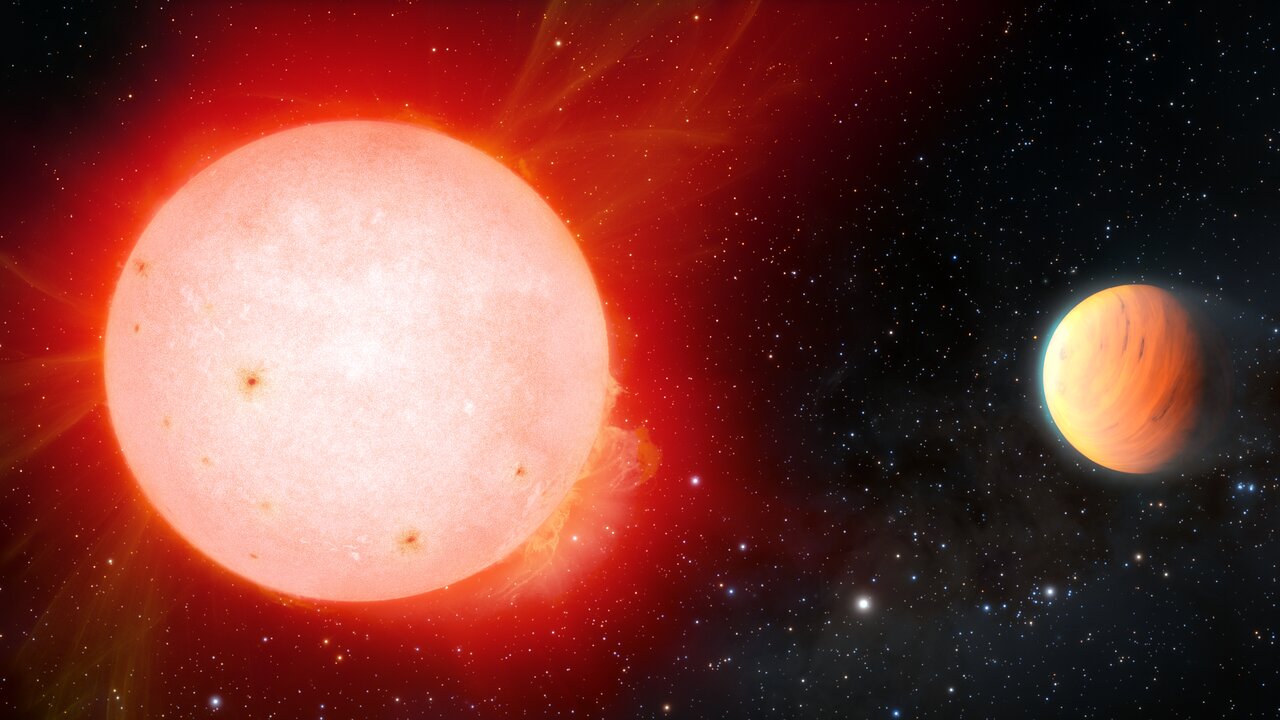The new Earth-like exoplanet SPECULOOS-3 b is 54.6 light-years away from us. It orbits around an ultracold red dwarf but is very hot.

New Planet
An international team of scientists reports the discovery of a new planet SPECULOOS-3 b, close in size to Earth. It orbits around a red dwarf located only 54.6 light-years away from us. The paper about it was recently published in the journal Nature Astronomy.
This world got its strange name from the Search for Planets EClipsing ULtra-cOOl Stars (SPECULOOS) project, within the framework of which this discovery was made. It aims to search for planets in the orbits of the smallest and coldest stars. For this purpose, a network of six telescopes with a mirror diameter of 1 m is used. Four of them are located in Chile, and one more in Mexico and the Canary Islands.
Parameters of the new world
The star SPECULOOS-3 (also known as LSPM J2049+3336) is a dim red dwarf of class M6.5. It is 8 times smaller than the Sun in diameter and 10 times smaller in mass. Its surface temperature is 2800 K, which is half that of our luminary.
The planet can be rather conventionally called Earth-like. It is transiting, that is, it passes between us and its own star. This is the reason we know that its diameter is 97.7% of Earth’s, so it is almost the same as our planet.
However, it only takes 17 hours to make one orbit around the star. This causes its surface to heat up to 553 K. That is, it is more likely to resemble Mercury in its conditions. Nothing is yet known about the mass and chemical composition of SPECULOOS-3 b, but it should be a rocky world with a low hydrogen content. In that case, the weight of this world should be at 93% of the earth’s weight.
The researchers note that the combination of the host star’s high brightness in infrared light and its small size make SPECULOOS-3 b one of the best candidates for spectroscopic studies of the atmosphere with the James Webb Space Telescope.
According to phys.org


